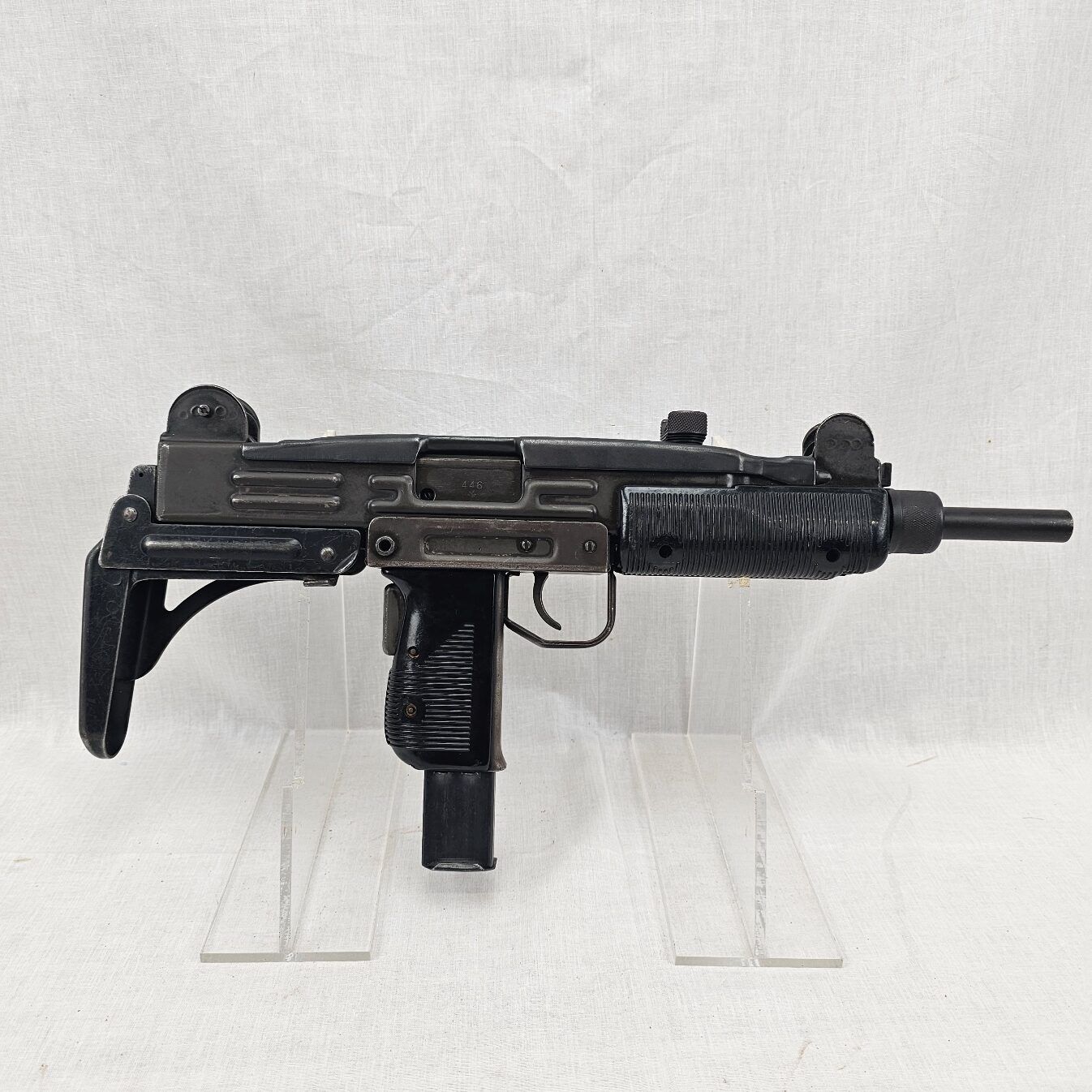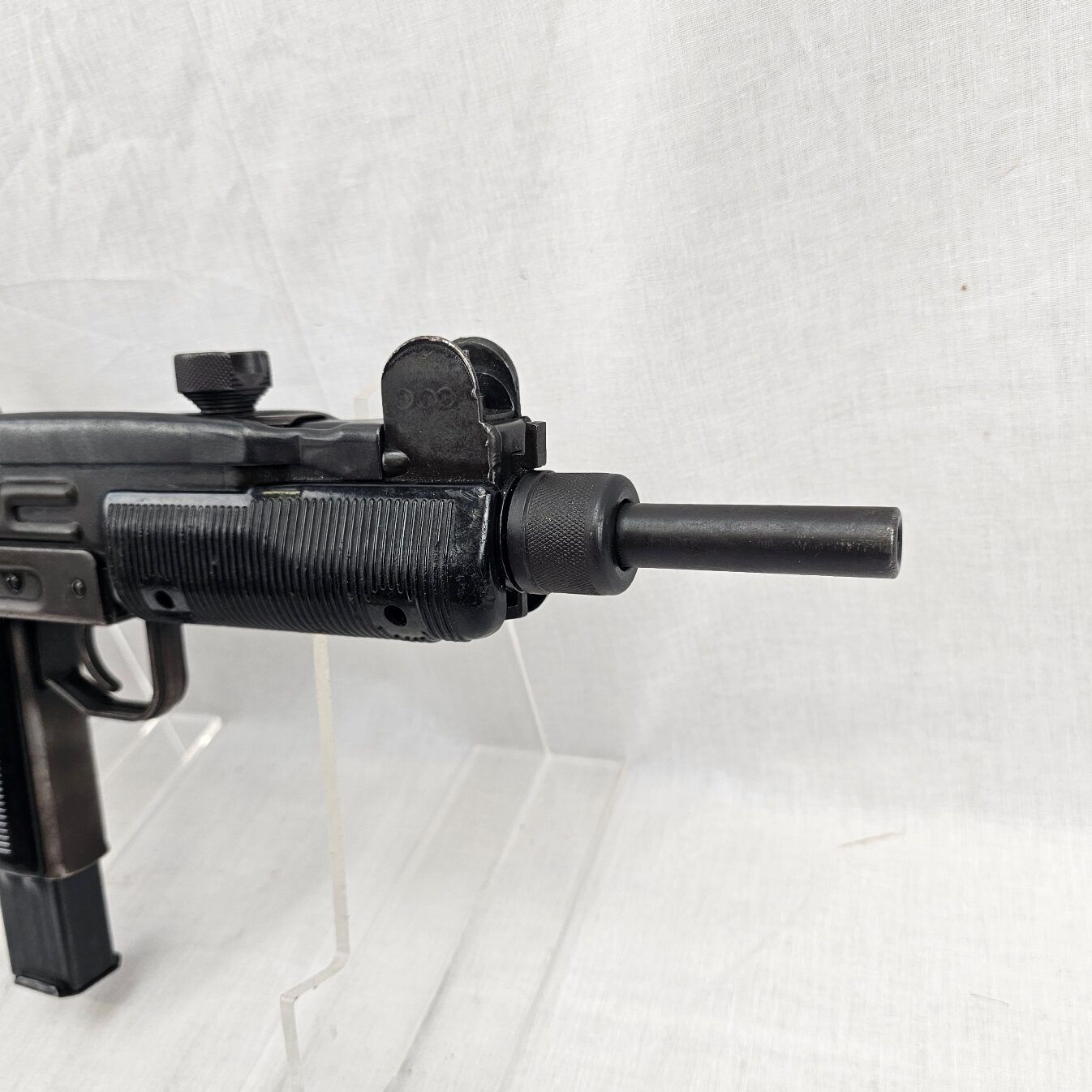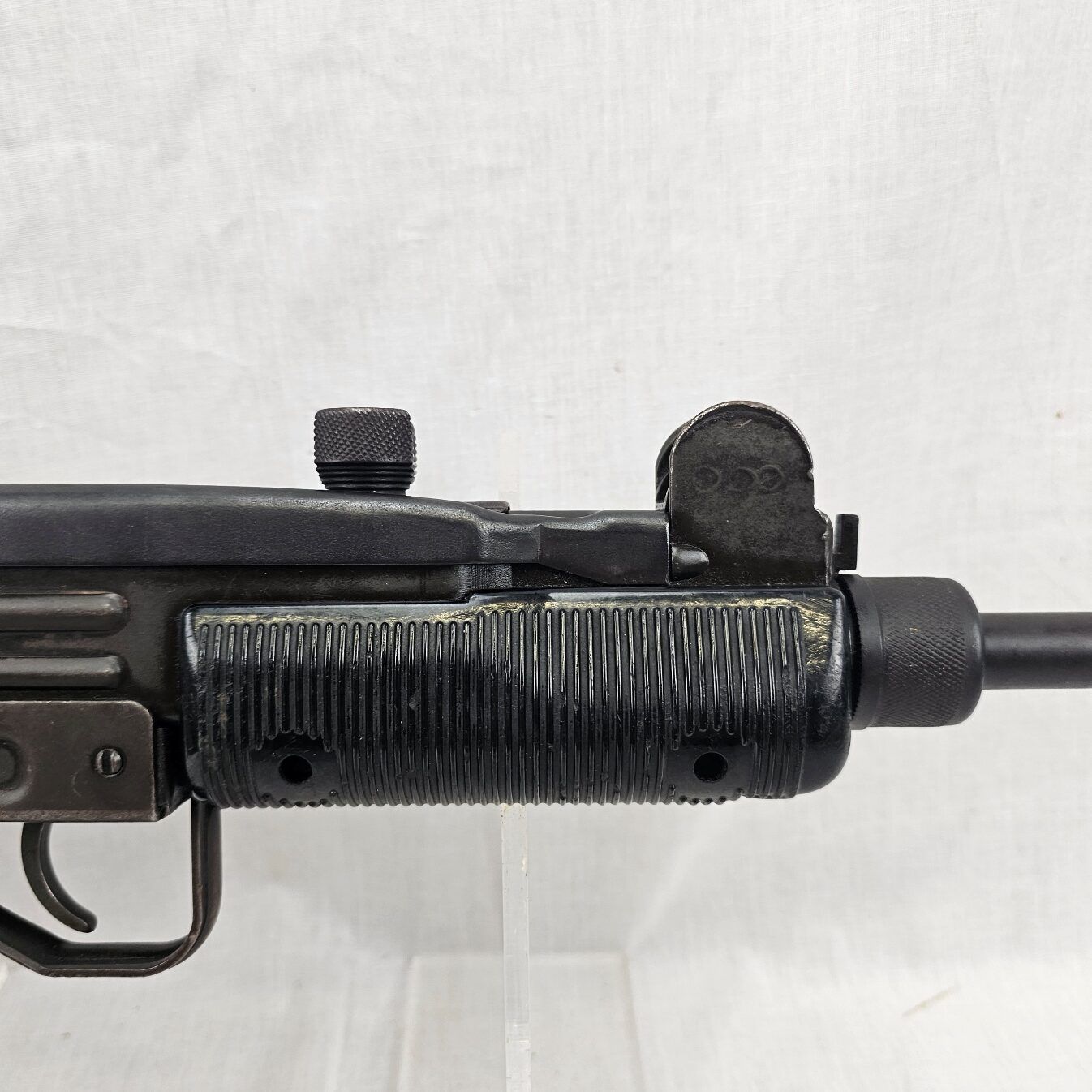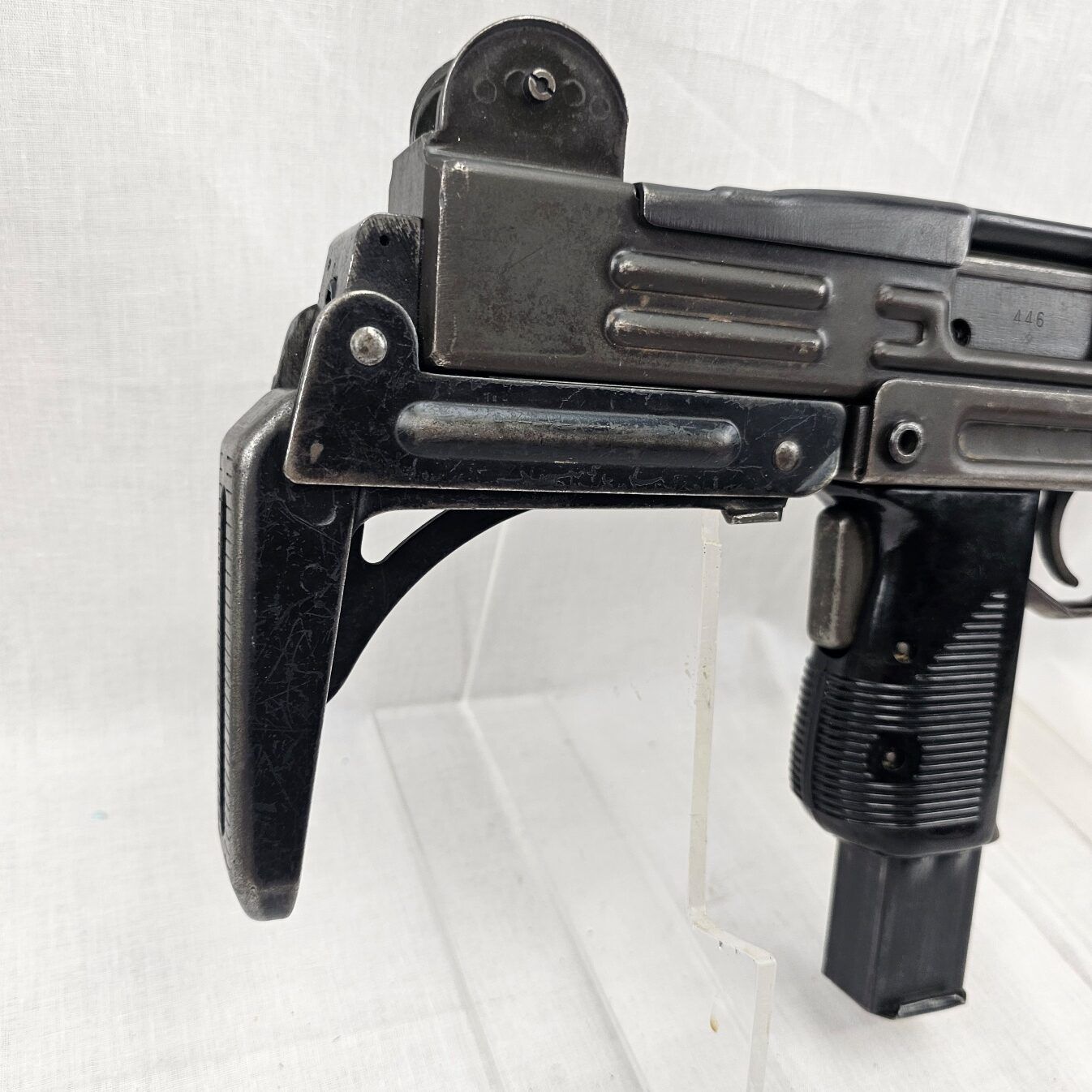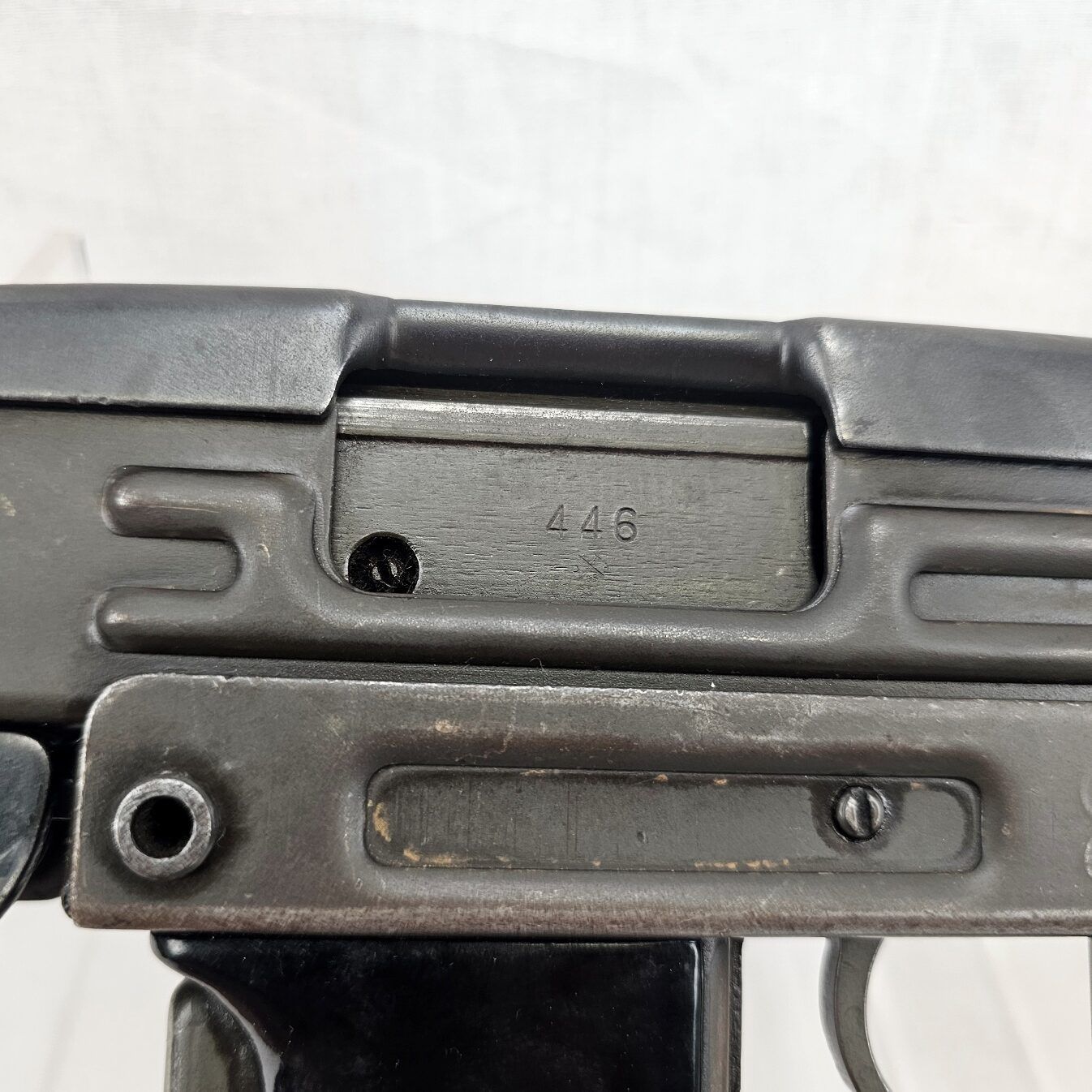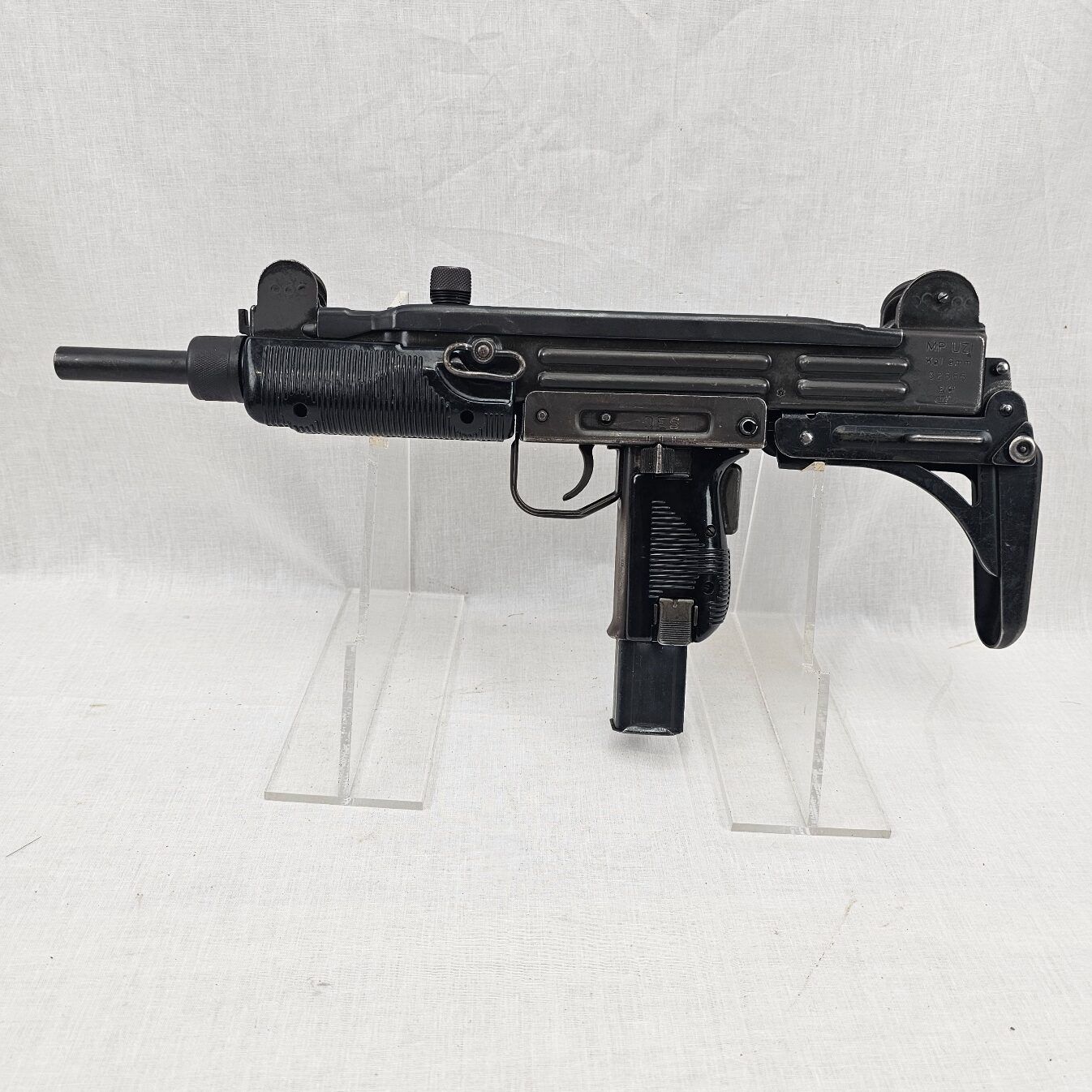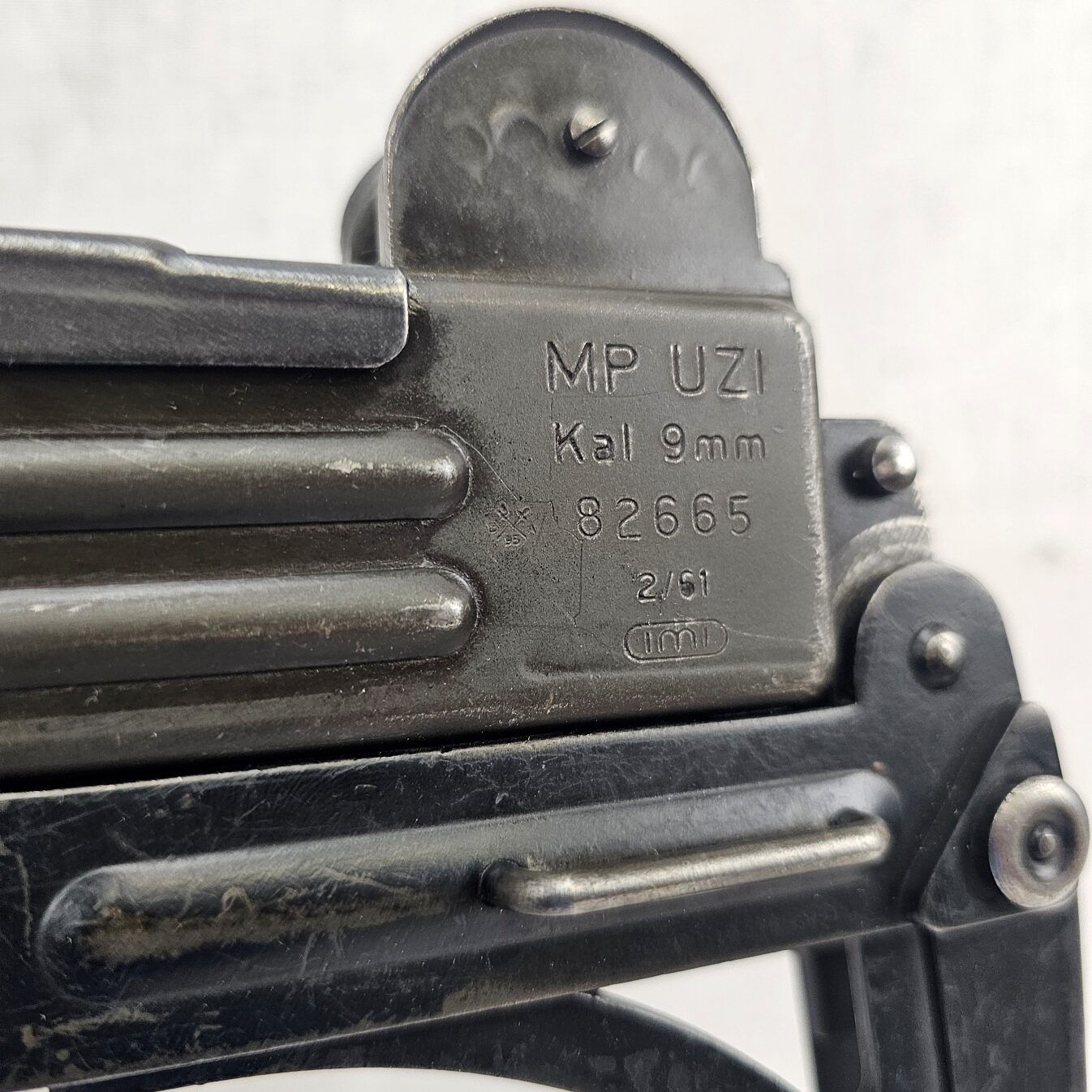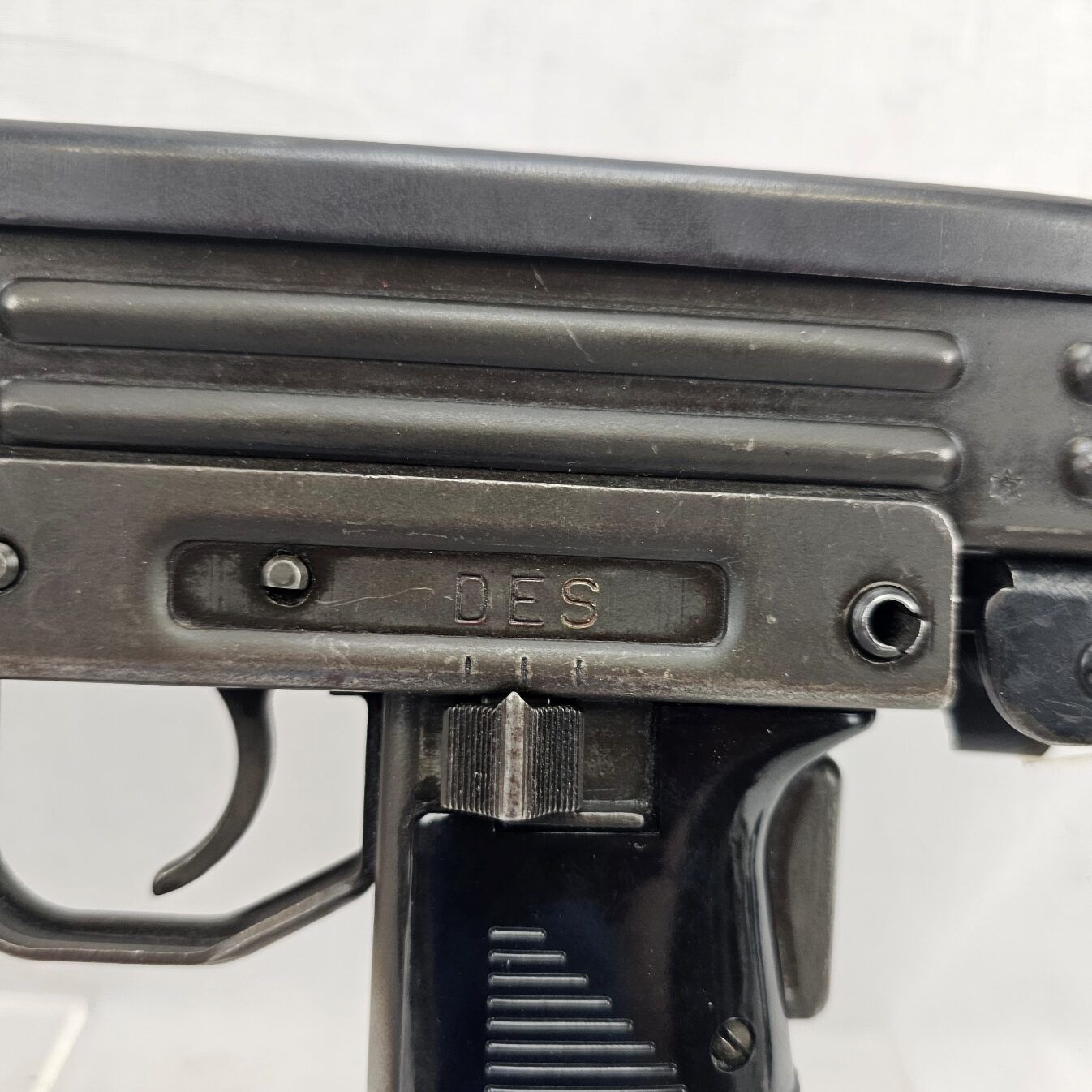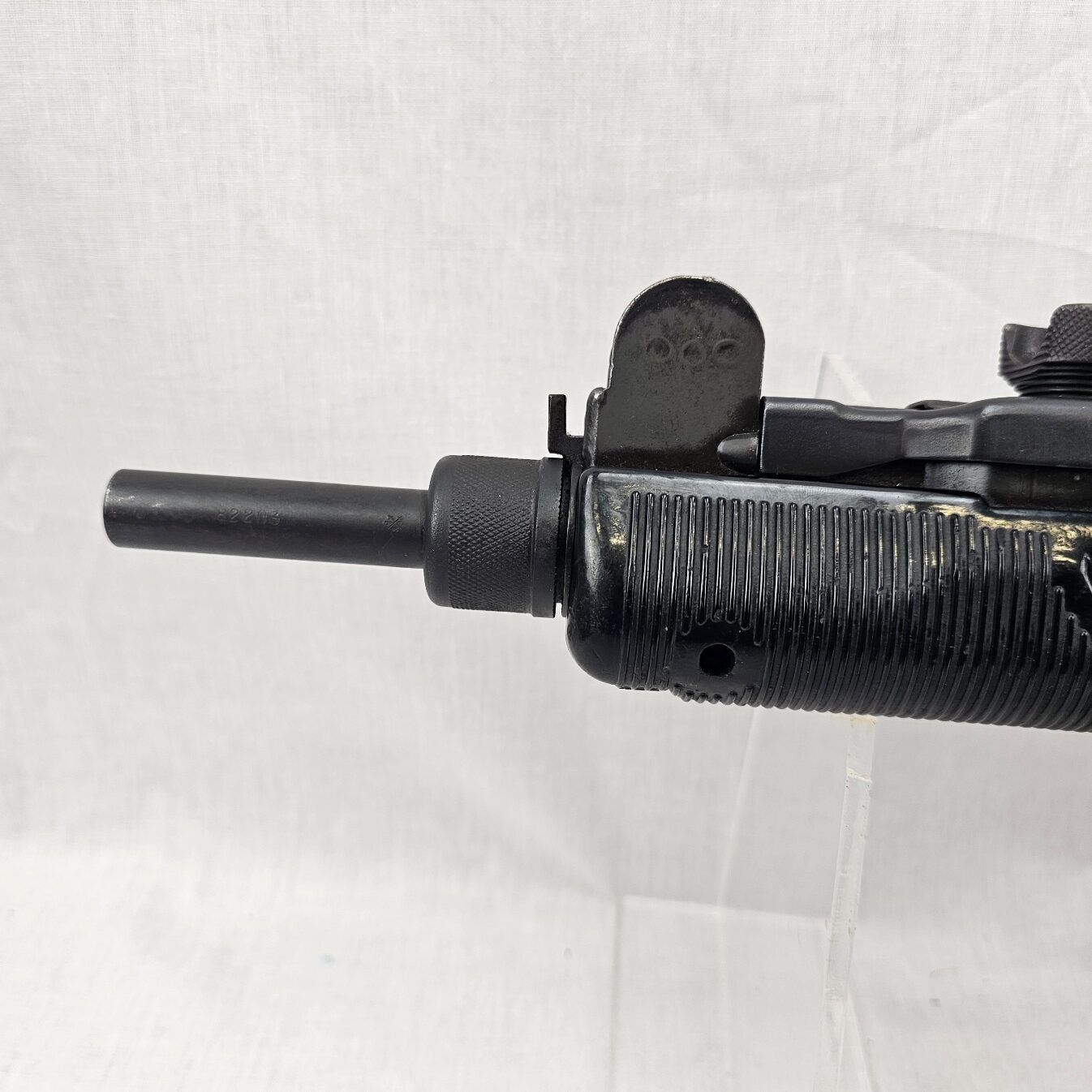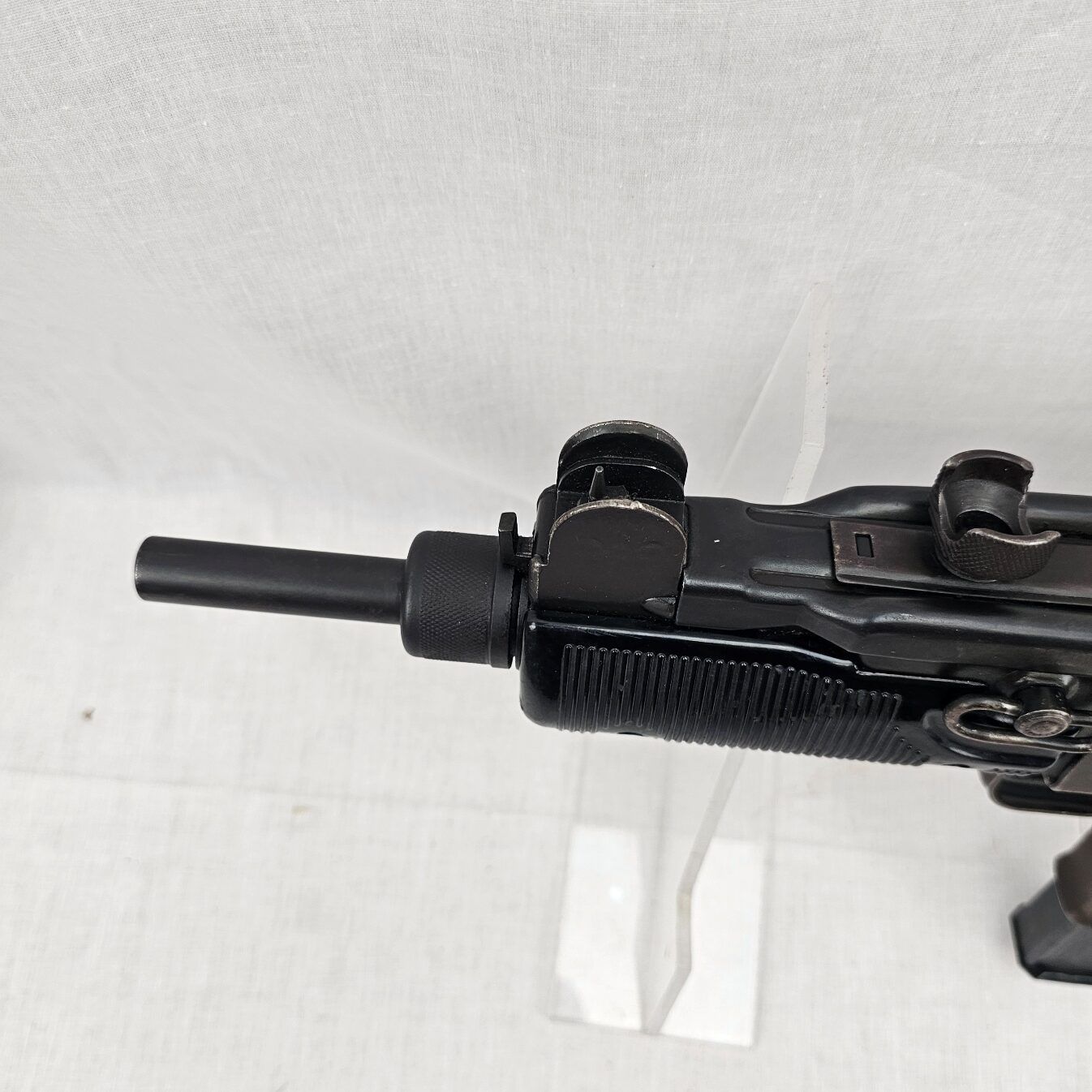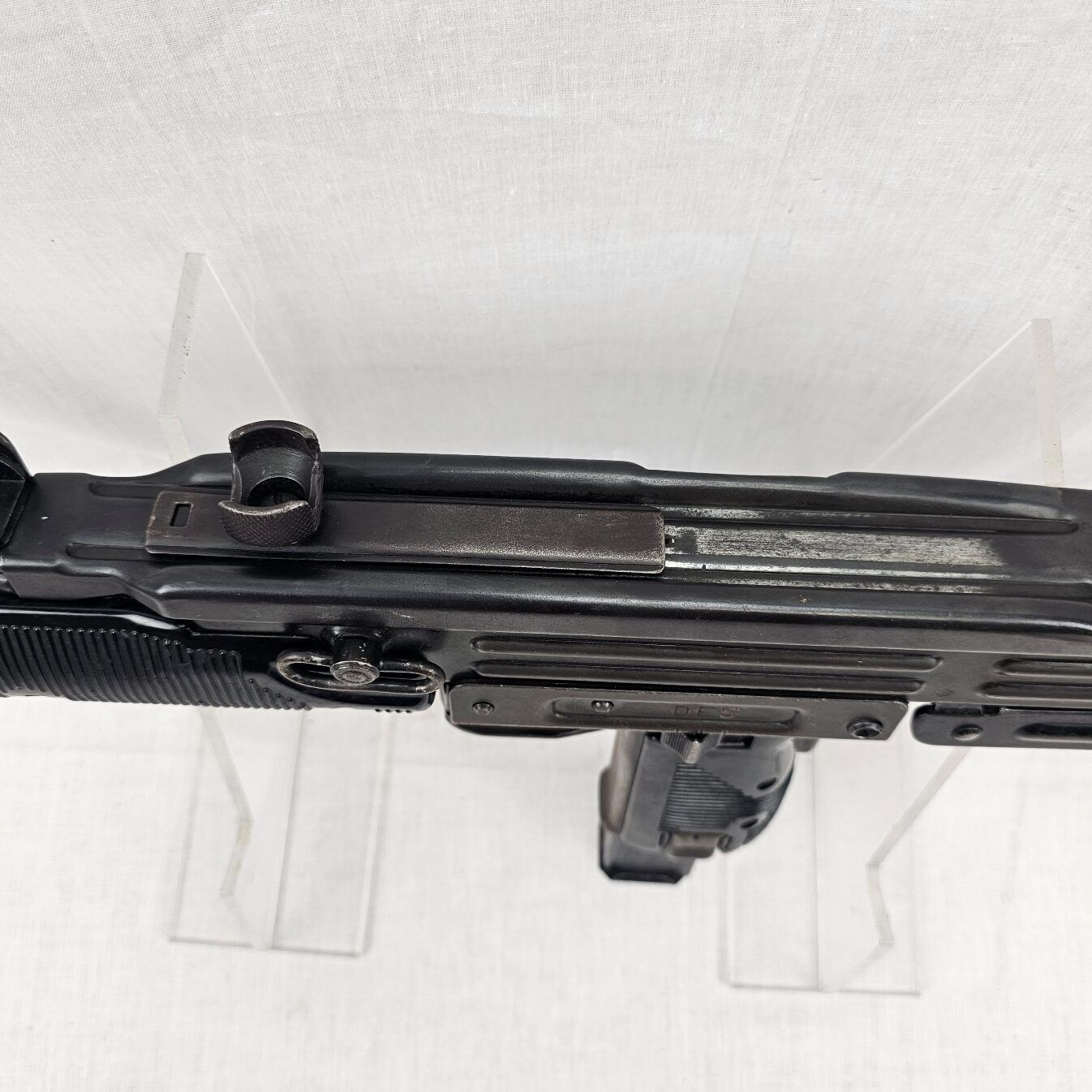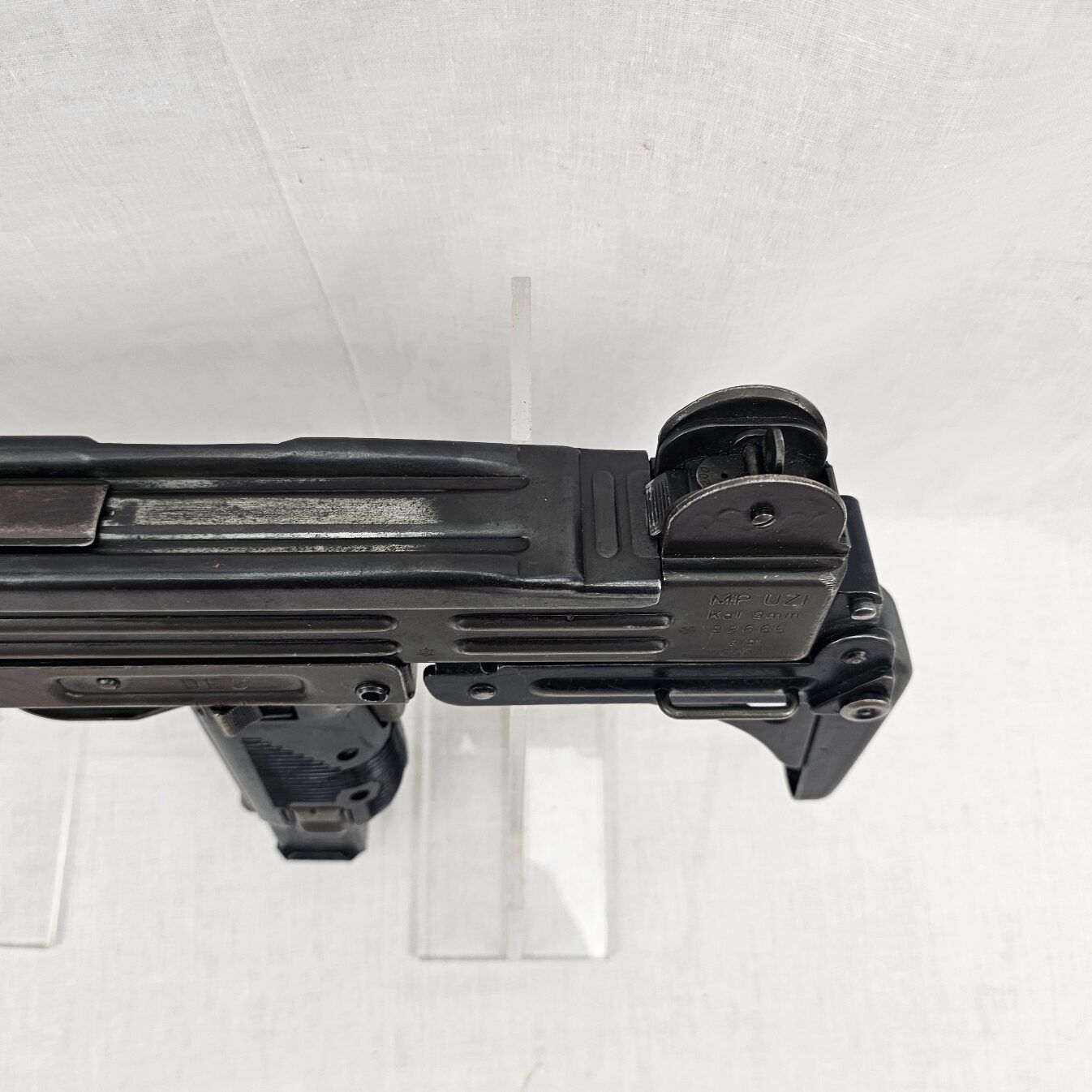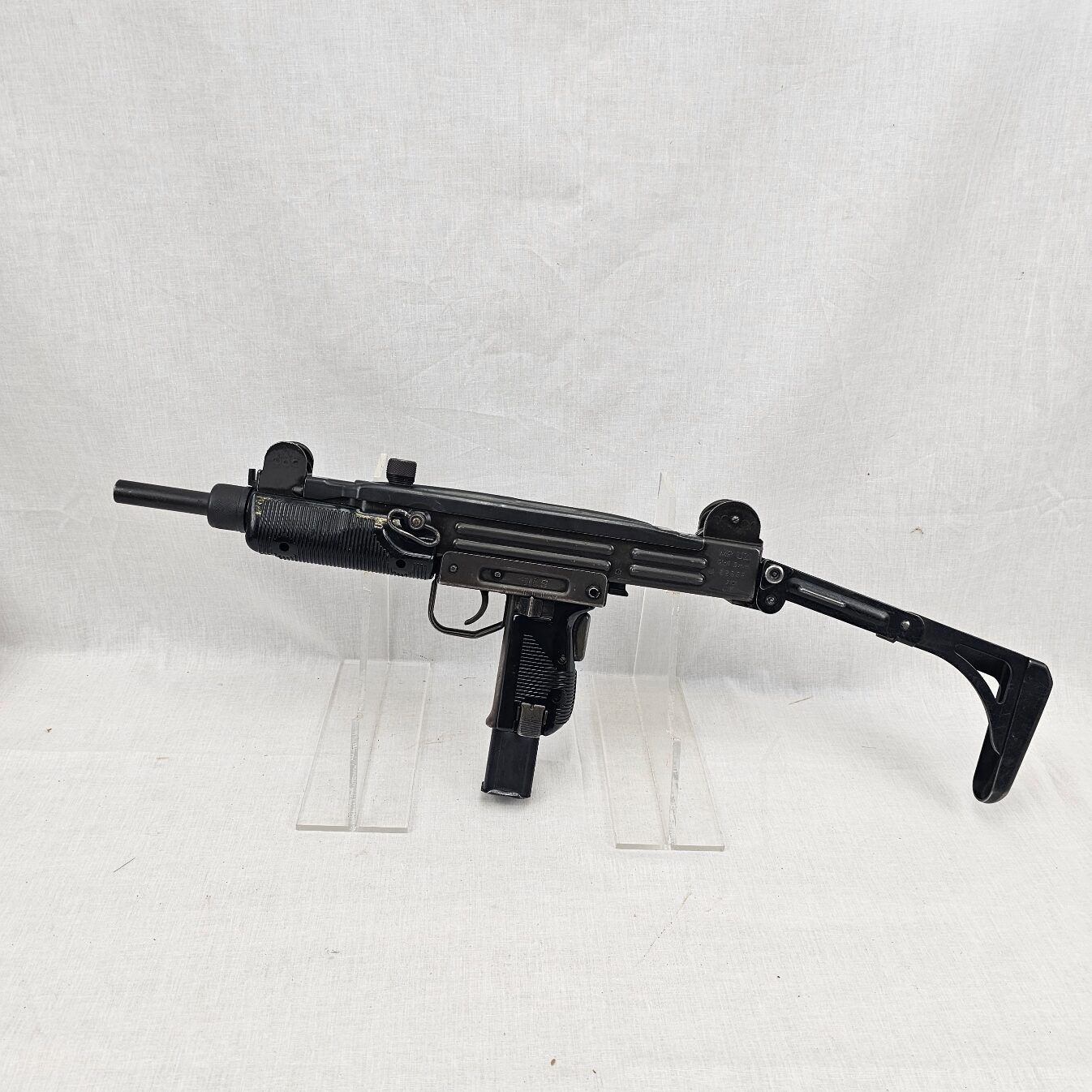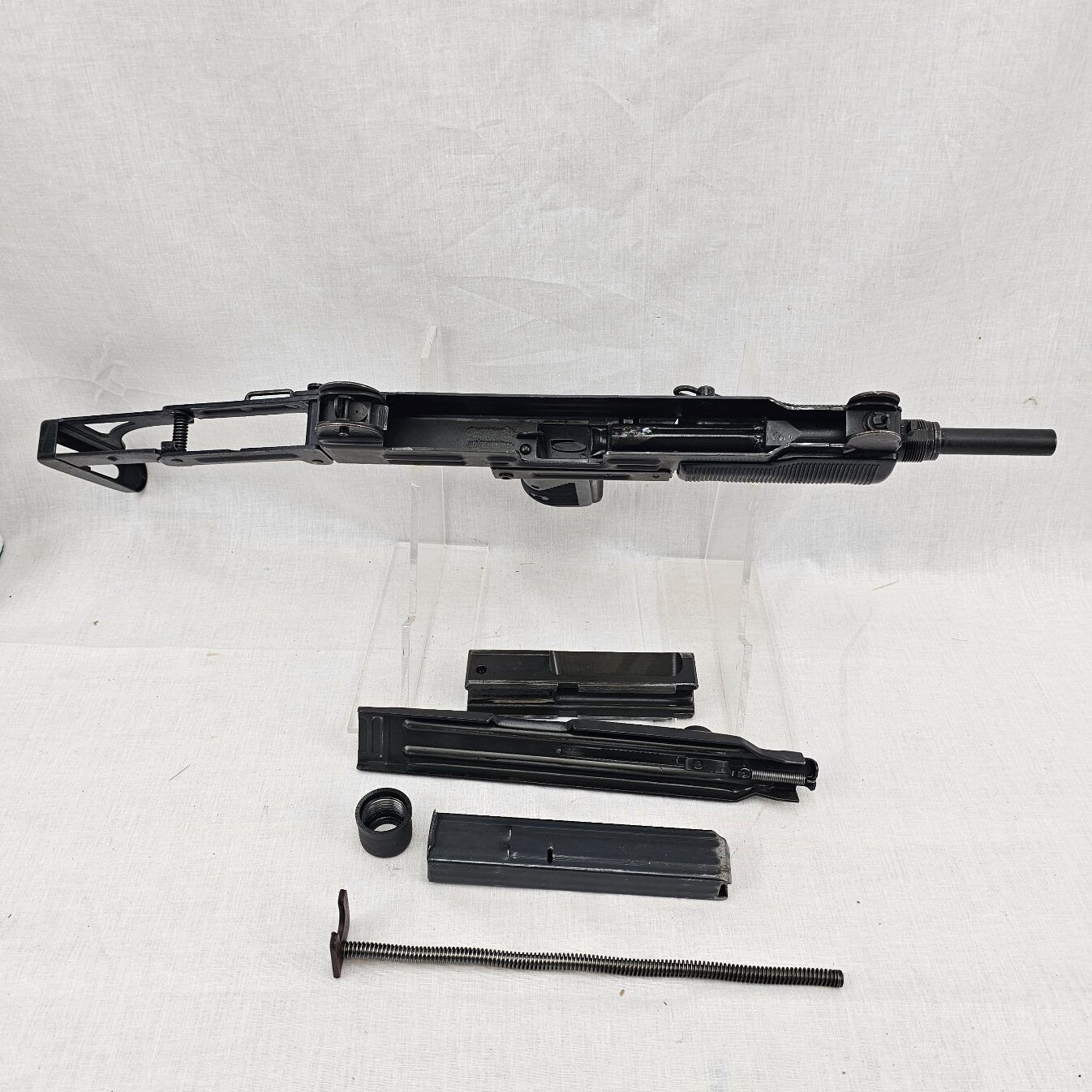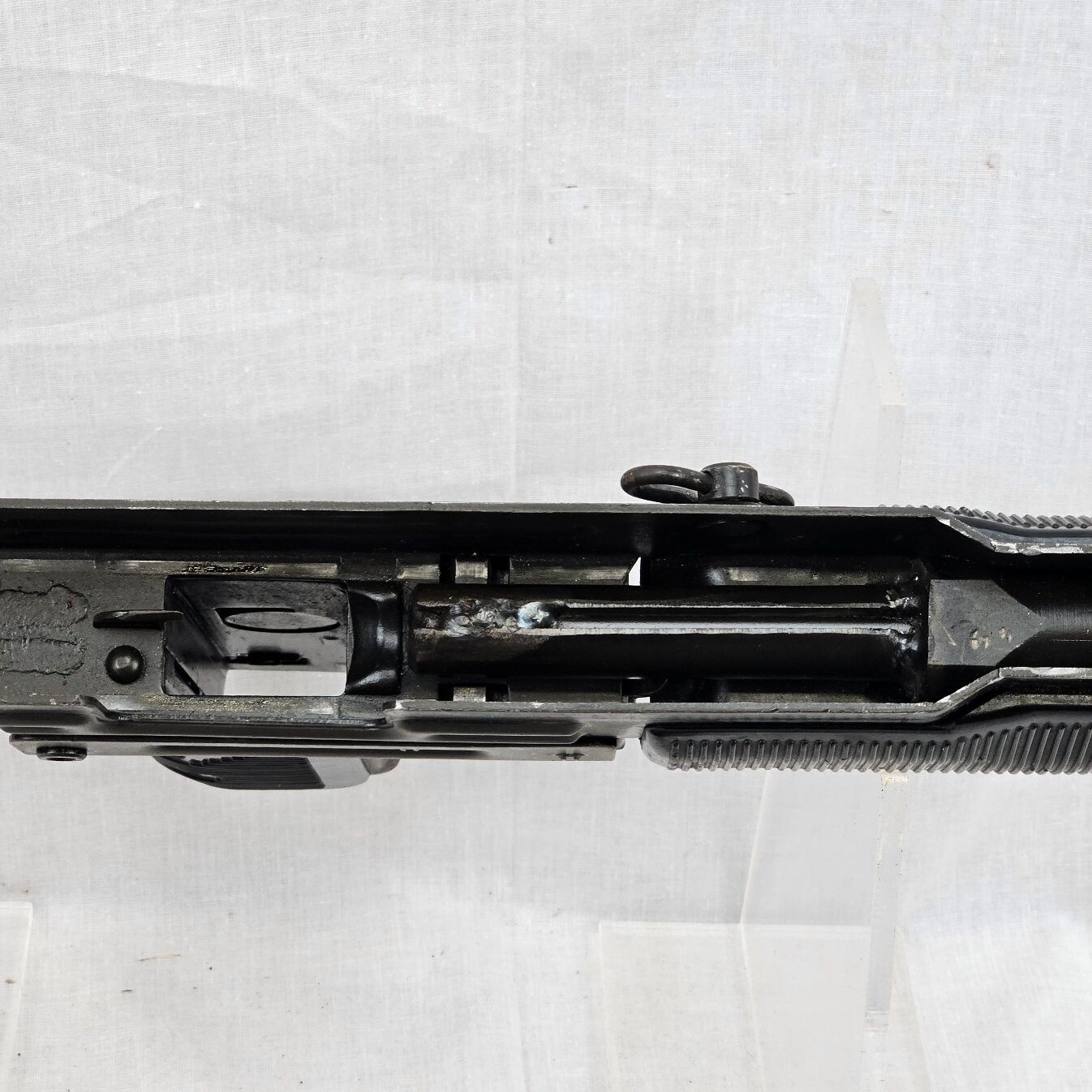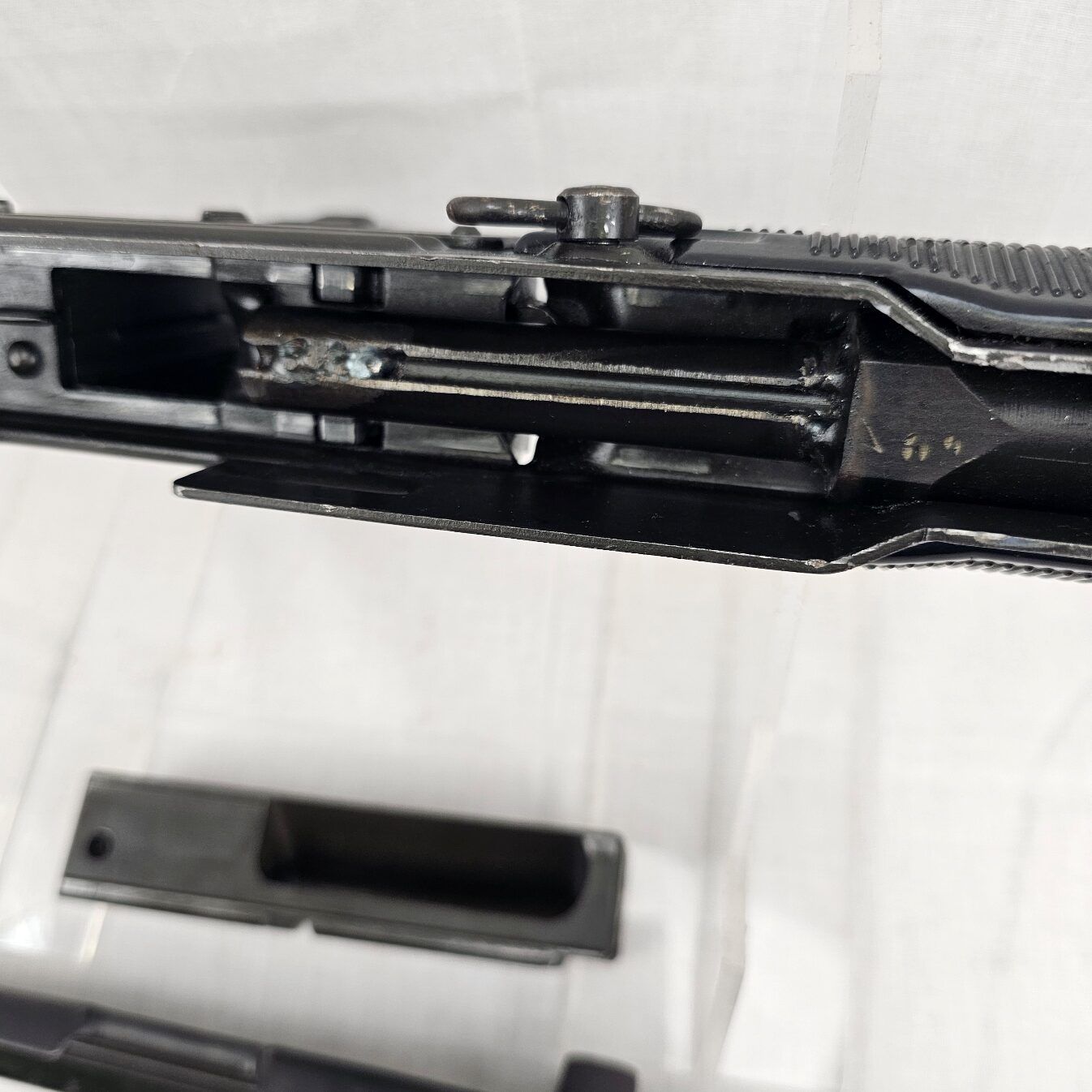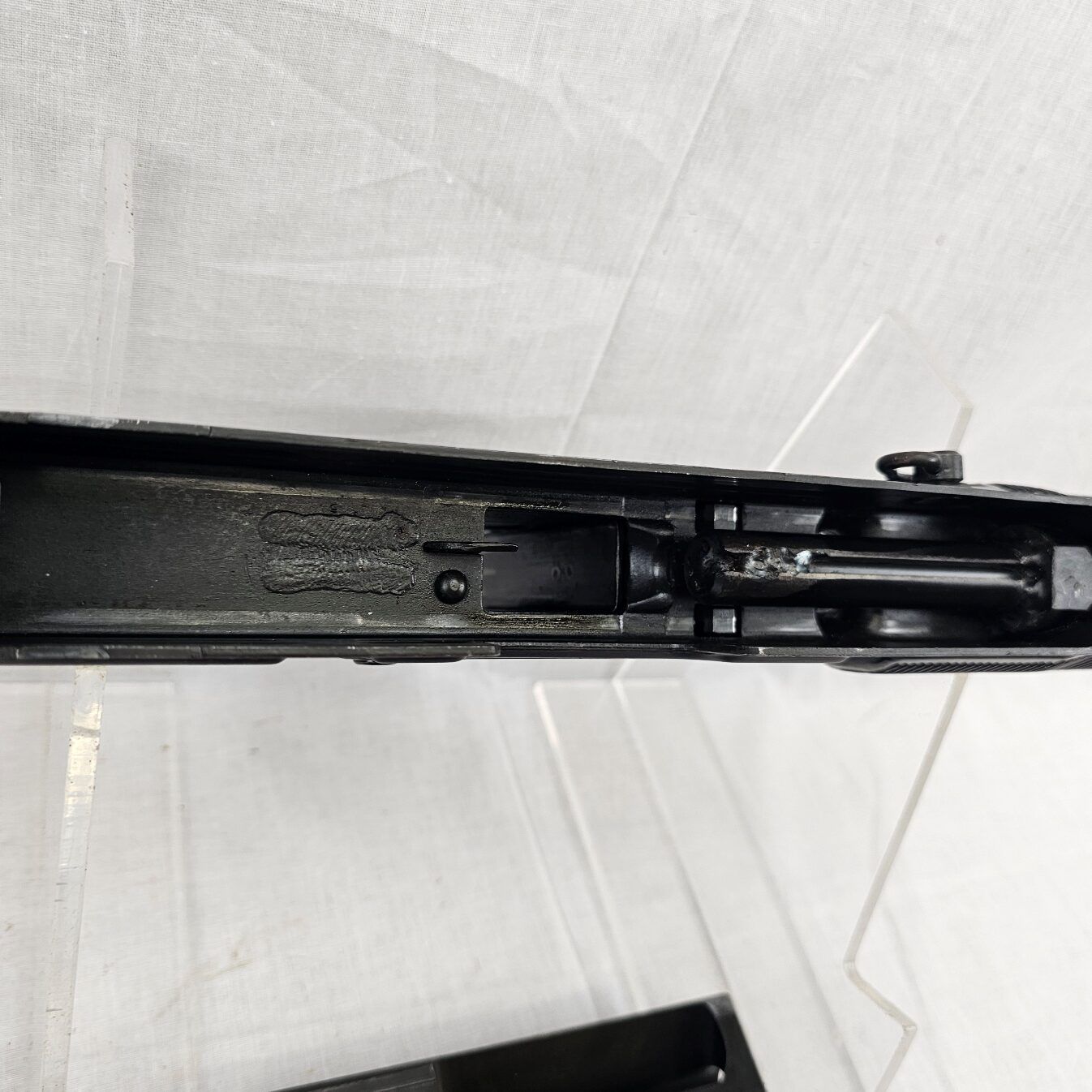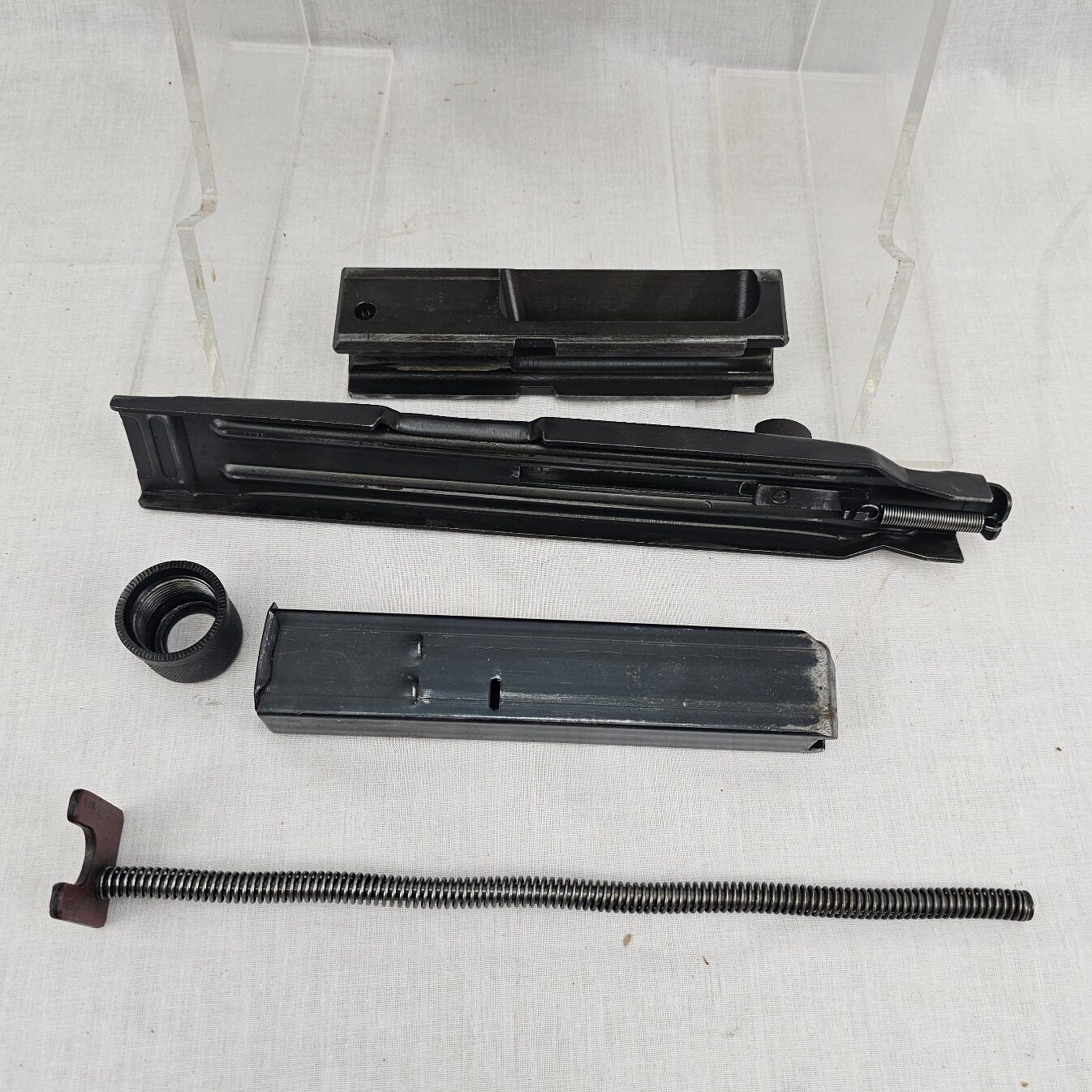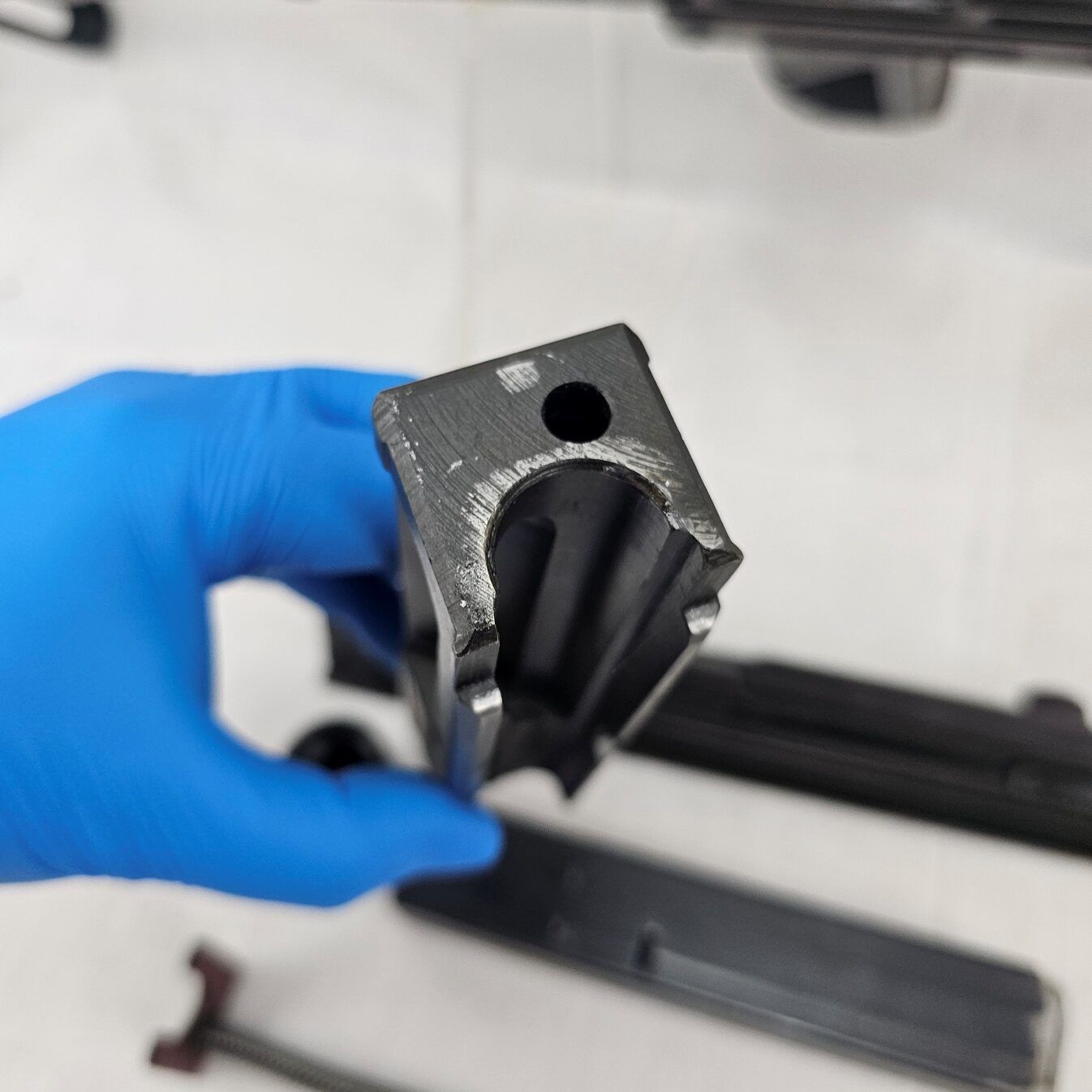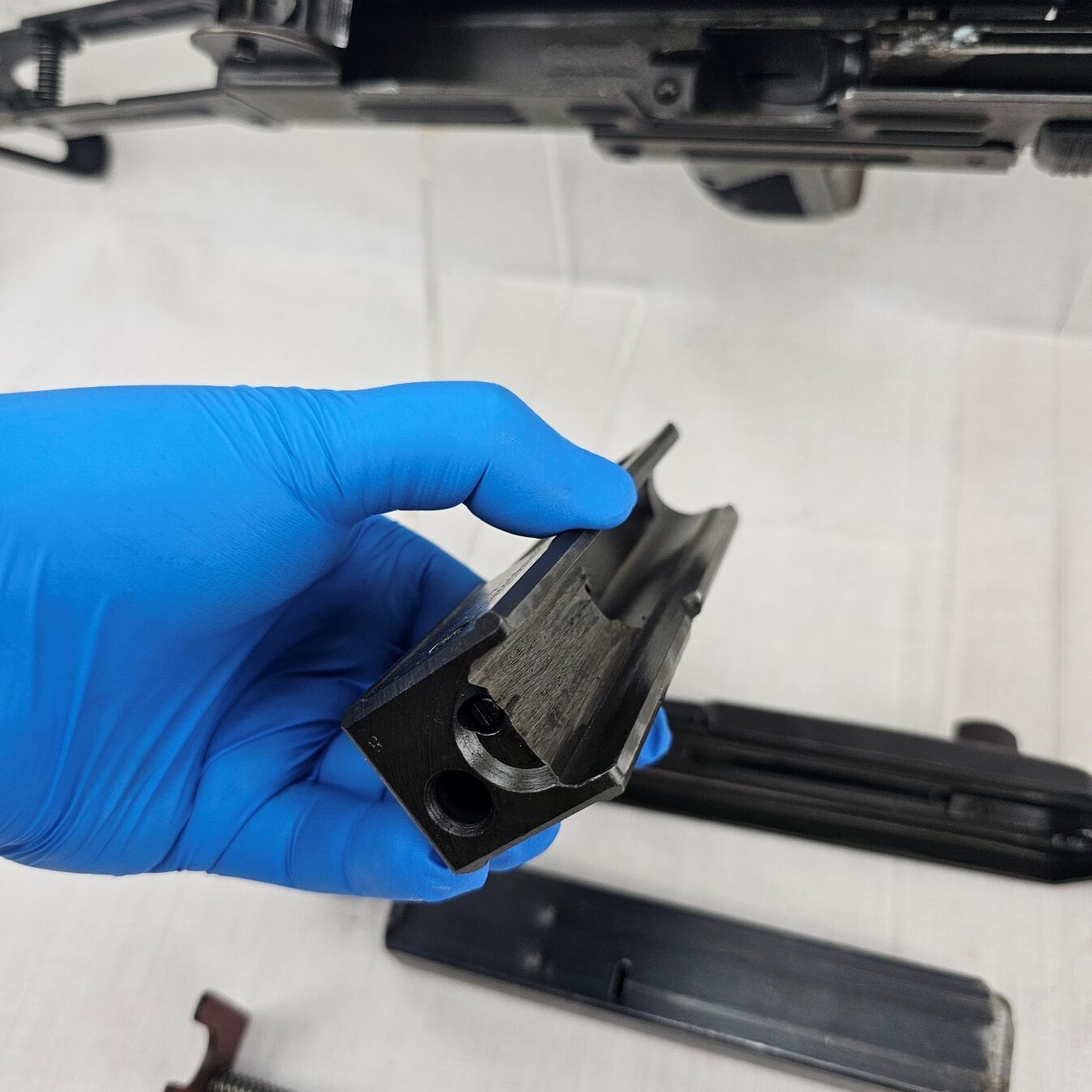~ Old Spec MP UZI 9mm SMG With Folding Stock Sn. 82665 – Deactivated ~
The SMG can be stopped, cocked and dry fired. Please see the pictures for details. It is serial numbered 82665
The UZI 9mm submachine gun is one of the most recognizable and widely used submachine guns in the world, originally designed in the 1950s by Israeli firearms designer Uziel Gal for the Israeli Defense Forces (IDF). Known for its compact design, ruggedness, and ease of use, the UZI became a popular choice for military, law enforcement, and security forces globally. The UZI 9mm with a folding stock is a versatile variant, providing greater portability and flexibility, especially in close-quarters combat.
Design and Development of the UZI SMG:
Origins and Purpose:
The UZI was developed in 1948-1950 and officially adopted by the Israeli military in 1954. It was designed to be reliable, compact, and easy to manufacture.
Its development aimed to equip soldiers with a powerful and fast-firing weapon suitable for close-range encounters, especially in urban and desert environments where the IDF operated.
Specifications:
Caliber: 9x19mm Parabellum, although later versions were chambered in other calibers (e.g., .45 ACP).
Operation: Blowback-operated, open-bolt design, making it straightforward and reliable even under harsh conditions.
Rate of Fire: Approximately 600 rounds per minute, allowing for effective suppression and control in close-quarters.
Magazine: 25- or 32-round detachable box magazine, with some models compatible with higher-capacity magazines.
Weight: Around 3.5 kg (7.7 lbs) when unloaded, with a compact profile that makes it easy to maneuver.
Length: The gun measures approximately 470mm (18.5 inches) with the stock folded and 650mm (25.6 inches) extended.
Folding Stock:
The folding stock was designed for flexibility, allowing soldiers to transition between a compact profile for close-quarters combat and a stable firing platform for more accurate shots.
It could be quickly deployed or folded, making it ideal for transport, close-quarters, and situations requiring fast maneuvering.
The stock itself was often made of metal and could be locked into place with minimal adjustment.
Simplicity and Reliability:
The UZI’s open-bolt design reduced the risk of overheating and made the gun easy to clear in case of malfunctions.
Fewer moving parts and its straightforward construction contributed to its reliability, even in challenging conditions, including sand, mud, and rain.
The UZI’s body construction from stamped sheet metal also made it affordable to manufacture.
Use in the Field:
The UZI became popular with various military and law enforcement agencies, including the IDF, due to its adaptability and effectiveness in close-quarters.
Its portability, ease of use, and compact design made it especially valuable for urban operations and security details.
The folding stock variant was commonly used by tank crews, paratroopers, and special forces who needed a high-firepower weapon that was compact and easy to handle.
Global Adoption and Influence:
Over time, the UZI was exported to over 90 countries, becoming one of the most prolific SMGs worldwide.
It saw action in numerous conflicts from the 1960s onward, including the Six-Day War, Yom Kippur War, and other engagements requiring mobile and rapid response weapons.
The UZI’s design influenced later SMGs, and its successful configuration inspired the development of compact SMGs and personal defense weapons.


